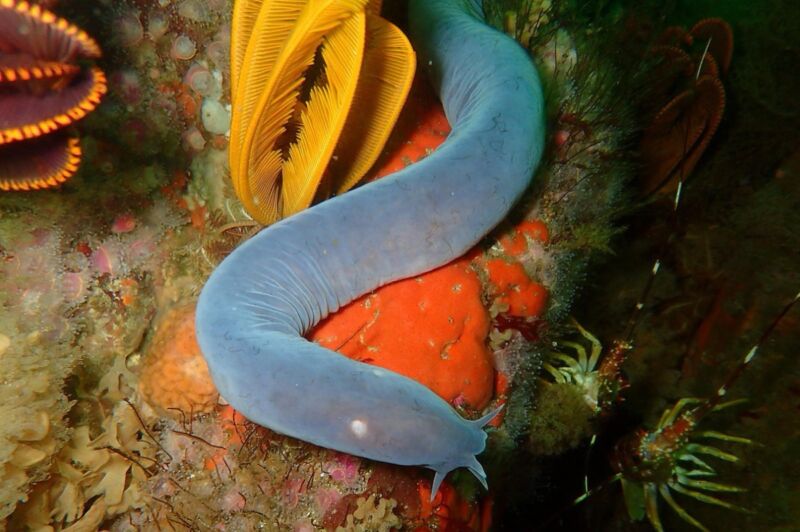How hagfish burrow into deep-sea sediment

Enlarge / A Sixgill Hagfish (Eptatretus hexatrema) in False Bay, South Africa. (credit: Peter Southwood/CC BY-SA 4.0)
The humble hagfish is an ugly, gray, eel-like creature best known for its ability to unleash a cloud of sticky slime onto unsuspecting predators, clogging the gills and suffocating said predators. That’s why it’s affectionately known as a “snot snake.” Hagfish also love to burrow into the deep-sea sediment, but scientists have been unable to observe precisely how they do so because the murky sediment obscures the view. Researchers at Chapman University built a special tank with transparent gelatin to overcome this challenge and get a complete picture of the burrowing behavior, according to a new paper published in the Journal of Experimental Biology.
“For a long time we’ve known that hagfish can burrow into soft sediments, but we had no idea how they do it,” said co-author Douglas Fudge, a marine biologist who heads a lab at Chapman devoted to the study of hagfish. “By figuring out how to get hagfish to voluntarily burrow into transparent gelatin, we were able to get the first ever look at this process.”
As previously reported, scientists have been studying hagfish slime for years because it’s such an unusual material. It’s not like mucus, which dries out and hardens over time. Hagfish slime stays slimy, giving it the consistency of half-solidified gelatin. That’s due to long, thread-like fibers in the slime, in addition to the proteins and sugars that make up mucin, the other major component. Those fibers coil up into “skeins” that resemble balls of yarn. When the hagfish lets loose with a shot of slime, the skeins uncoil and combine with the salt water, blowing up more than 10,000 times its original size.



